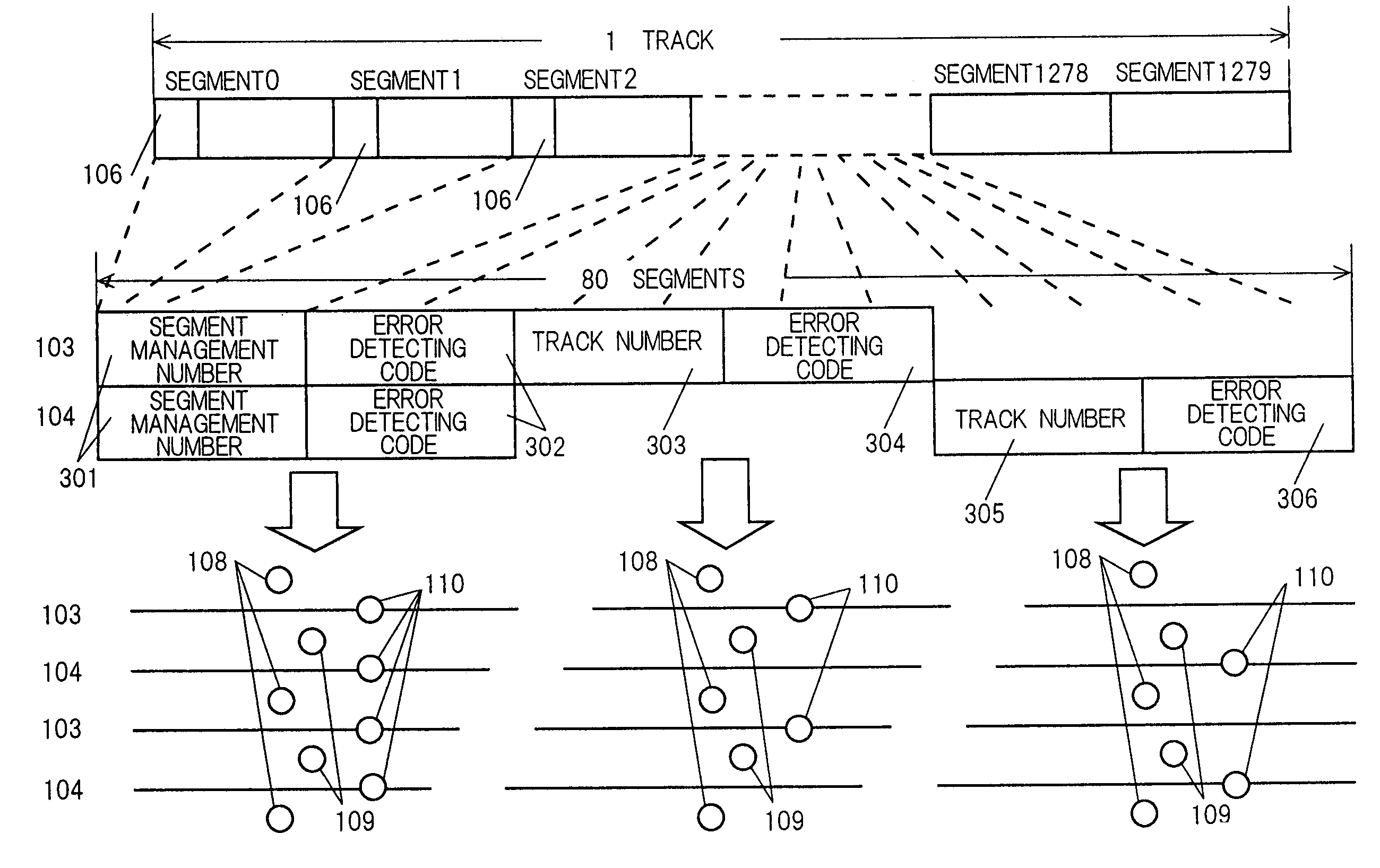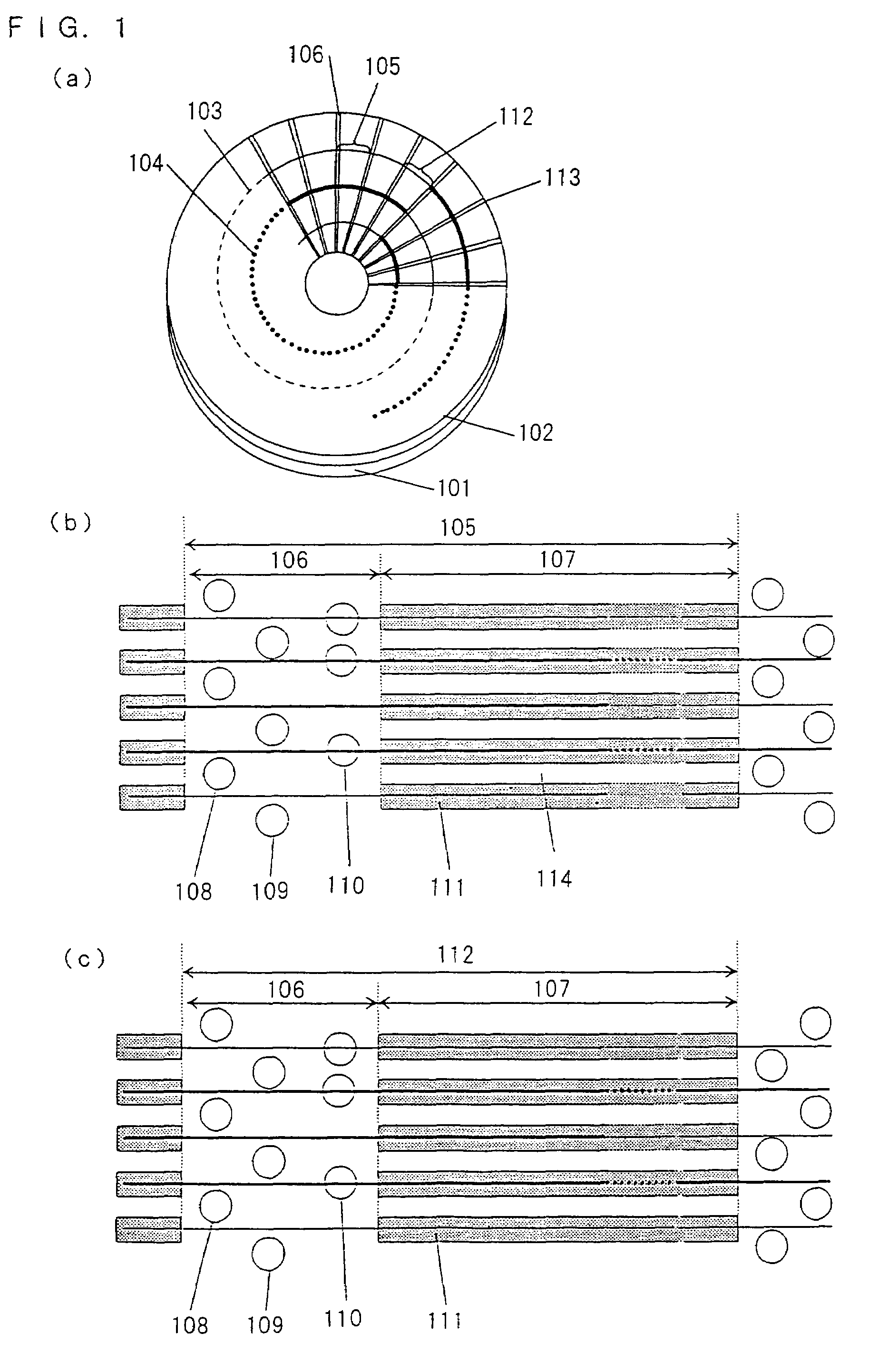Recording medium, its controller and controlling method
a controller and control method technology, applied in the field of recording mediums, can solve the problems of difficult to change the size of the sector, the number, the limit of the interval between tracks, etc., and achieve the effect of simple structure and easy to obtain a clock signal
- Summary
- Abstract
- Description
- Claims
- Application Information
AI Technical Summary
Benefits of technology
Problems solved by technology
Method used
Image
Examples
embodiment 1
[0236]FIGS. 1 through 14 show a magneto-optical disk and a recording apparatus, a reproducing apparatus, a recording method or a reproduction method according to the present invention.
[0237]While the embodiments herein described are directed to a magneto-optical disk and a recording apparatus, a reproducing apparatus, a recording method or a reproduction method for the same, applications of the present invention are not limited to a magneto-optical disk, and applications to any desired recording medium are possible.
1)>
[0238]Part (a) of FIG. 1 shows a general overall structure of a magneto-optical disk according to an embodiment 1 of the present invention.
[0239]In part (a) of FIG. 1, denoted at 101 is an optical disk substrate, denoted at 102 is a recording film (a reproduction layer 13, an intermediate layer 14 and a recording layer 15 in FIG. 7), denoted at 103 is a first recording track, denoted at 104 is a second recording track which is next to the first recording track, denoted...
embodiment 2
[0398]A magneto-optical disk, and a recording apparatus, a reproducing apparatus, a recording method and a reproduction method for the same according to the present invention will now be described with reference to FIGS. 15 through 17.
[0399]The magneto-optical disk, and the recording apparatus, the reproducing apparatus, the recording method and the reproduction method for the same according to the embodiment 2 are basically the same as the magneto-optical disk and the like according to-the embodiment 1.
[0400]The magneto-optical disk according to the embodiment 2 is different from the magneto-optical disk according to the embodiment 1 in that the magneto-optical disk according to the embodiment 2 comprises information regarding a defective segment (which is a segment in which data cannot be correctly recorded or reproduced) and a spare segment which complements a defective segment.
[0401]In a similar fashion, the recording apparatus, the reproducing apparatus, the recording method an...
embodiment 3
[0436]Part (a) of FIG. 18 shows a general overall structure of the magneto-optical disk according to the
[0437]In part (a) of FIG. 18, denoted at 1801 is an optical disk substrate, denoted at 1802 is a recording film (the reproduction layer 13, the intermediate layer 14 and the recording layer 15 in FIG. 7), denoted at 1803 is a first recording track, denoted at 1804 is a second recording track which is next to the first recording track, denoted at 1805 are segments obtained by dividing the first recording track 1803 and the second recording track 1804 into 1280 pieces, denoted at 1806 and 1813 are pre-pit areas (pre-formatted areas) which contain start pits, servo pits for tracking and address pits which express position information on the disk.
[0438]As shown in the drawing, the first recording track 1803 and the second recording track 1804 are spiral areas which start and end at the pre-pit areas 1813: When the spiral recording tracks are traced from an inner round toward an outer ...
PUM
 Login to View More
Login to View More Abstract
Description
Claims
Application Information
 Login to View More
Login to View More - R&D
- Intellectual Property
- Life Sciences
- Materials
- Tech Scout
- Unparalleled Data Quality
- Higher Quality Content
- 60% Fewer Hallucinations
Browse by: Latest US Patents, China's latest patents, Technical Efficacy Thesaurus, Application Domain, Technology Topic, Popular Technical Reports.
© 2025 PatSnap. All rights reserved.Legal|Privacy policy|Modern Slavery Act Transparency Statement|Sitemap|About US| Contact US: help@patsnap.com



